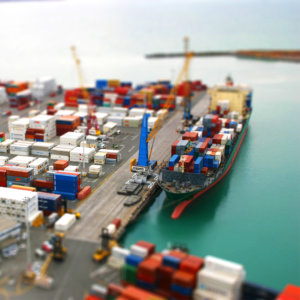Delivering on the Promise of Green Logistics
Effective collaboration on logistics can move mountains — and reduce emissions.
Topics
Leading Sustainable Organizations
In 2011, the Environmental Defense Fund (EDF) approached Dr. Edgar Blanco, research director of the MIT Center for Transportation & Logistics (MIT CTL), to develop a series of case studies designed to help companies embrace “carbon-efficient” strategies in logistics operations. The case studies would provide examples of financially viable logistics strategies that reduce greenhouse gas (GHG) emissions (primarily CO2) by reducing the amount of fuel and energy consumed to move products along the supply chain.
Three companies from different sectors — Boise, Inc., Ocean Spray and Caterpillar — were selected to participate in the project. The enterprises were at various stages of implementing logistics initiatives and were unsure of the GHG impact of these projects. In addition to providing technical details on how to assess the environmental impact of logistics initiatives, the case studies showed that collaboration is often at the center of achieving the expected financial and environmental benefits.
Companies worldwide have been working hard to reduce their carbon footprints. And one of the biggest challenges in that effort is the process of moving goods from point A to point B — the collection of transport and storage activities commonly referred to as “logistics.”
The ships, trucks, trains, airplanes, shipping containers, and warehouses that the logistics function uses to deliver products and services both locally and globally account for almost 6% of the GHG emissions generated by human activity. The EPA12 estimates that freight movements consume over 35 billion gallons of diesel fuel each year in the U.S. Burning this fuel produces more than 350 million metric tons of CO2, which is over 20% of all the GHG emissions generated by transportation-related fuel combustion. These emissions are neither declining nor stable — they’re growing, and fast.
There are known logistics strategies that can both significantly reduce CO2 emissions3 and produce cost savings.
References
1.EPA 430-R-13-001, U.S. EPA Inventory of U.S. Greenhouse Gas Emissions and Sinks 1990-2011, April 2013
3.In the U.S., CO₂ represents over 80% of GHG emissions and over 90% of logistics related emissions. Thus, it is the main GHG gas under analysis.
4.The Boise organization described in this case study, refers to Boise Cascade LLC, the paper and forest products. It should not be confused with Boise Cascade Corporation that is now OfficeMax Incorporated.

